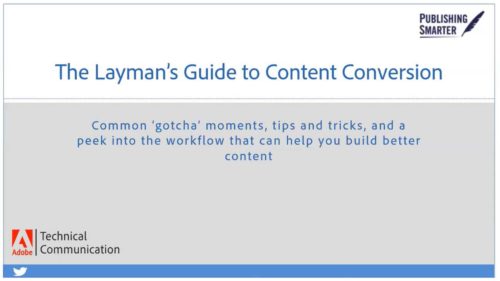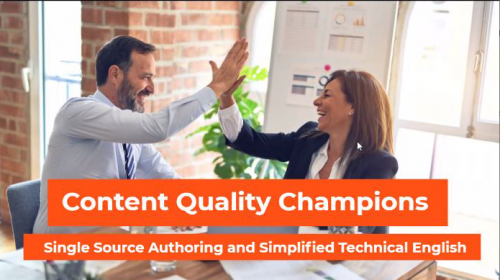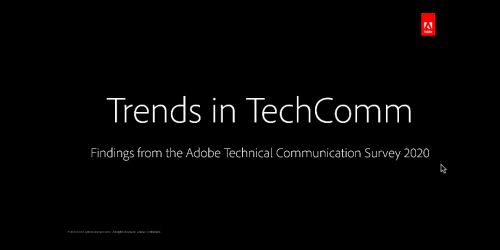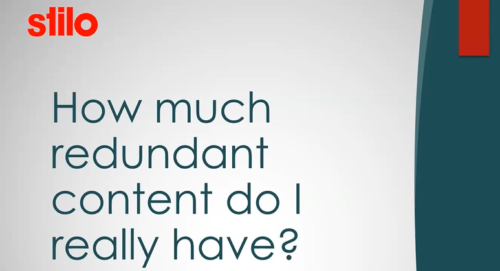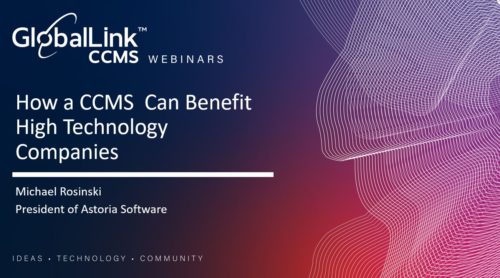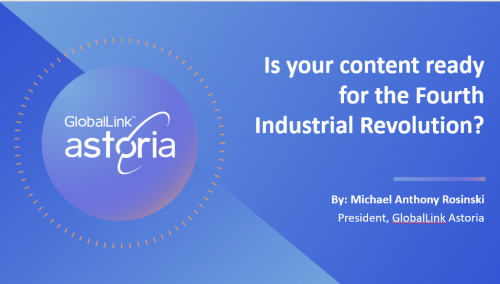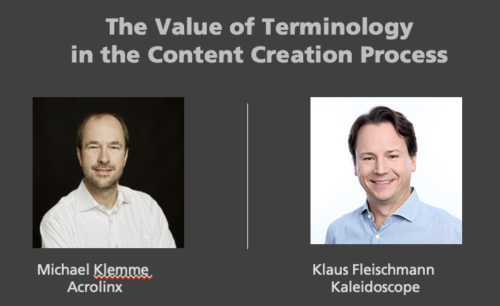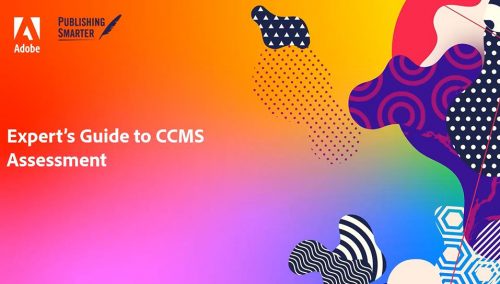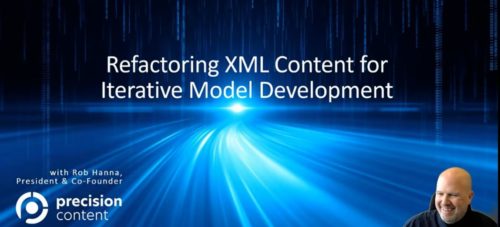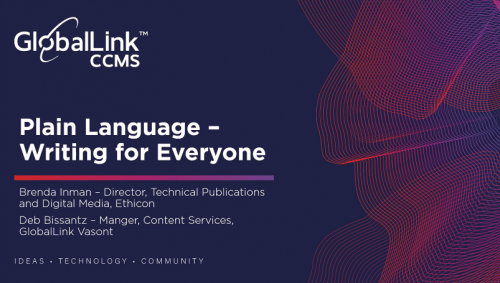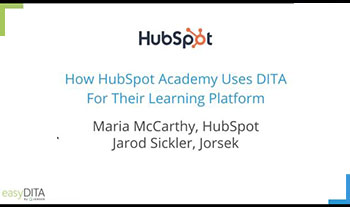- Character styles and how they are assigned (Use the style named Emphasis? Press Ctrl+I? Use a toolbar icon? Is there a difference?)
- Paragraph styles and how they are assigned (Did you skip bullet 1 and go right to bullet 2 because it looks better and, if you did, what does it mean?)
- Images and how to import them (Did you copy/paste or use the import setting? If so, how did you import it? As a link to the source?)
- Links between files or the web (Did it just get typed in, or was this inserted using a linking tool? How will it convert?)
- Page layout, tables, design, variables, equations, and so on
-
November 11, 2021 Content authors need to consider many factors while converting their existing content to structured content, including analyzing the content at its source. This exercise is interesting yet challenging, vexing, but rewarding. But what are those factors you need to think about for this conversion? For starters, you need to consider:
-
September 29, 2021 Not all Analytics are created equal. Nor are they fit for the same purpose. Google Analytics and other web analytics tools are incredibly helpful for marketing content. But when it comes to product documentation, they are outranged by dedicated Content Analytics. Next-gen Content Analytics is designed for technical content and understand the complexity and structure of your documentation down to the topic level. Far beyond the web analytics capabilities, they generate the type of insights that benefit not only the tech content professionals but the entire organization. In this webinar, you will learn how the documentation team can capture meaningful content metrics and drive change and improvement to the content, the product, and ultimately to customer service and user satisfaction leveraging dedicated Content Analytics. Presented by: Fabrice Lacroix is a serial entrepreneur and a technology pioneer. He has been working for 25 years on the development of innovative solutions around search technology, content enrichment and AI. He is the founder of Fluid Topics, the leading Content Delivery Platform that reinvents how users search, read and interact with technical documentation.
-
March 31, 2021 How do you ensure that your content is consistent and follows your brand’s guidelines? How do you begin a project that’s consistent across your technical communications? Is it an achievable goal? What results should I expect? In this webinar, learn how the combination of easyDITA's CCMS and HyperSTE allows you to check your content against your specific style guide, as well as industry standard grammar and terminology rules. The result is not only scalable and single-sourced content, but clear and concise content across the board. Content that's more cost effective, brand aligned, and ready to attract new customers. Attendees will learn:
- The value of combining an XML CCMS with a Grammarly-like content checker
- A live demo of easyDITA with HyperSTE that shows how the tools work together to help content creators
- A general project plan to help you get started in achieving great results
- An example of a customer implementation and their results
-
April 8, 2020 Technical Communication is in constant change: Requirements and expectations from both authors and consumers of technical content have changed dramatically over the last decade. The rise in digital experience innovation creates new customer expectations and demands. And enterprises around the world are exploring new ways to create new Content Interaction Experiences for their customers. In this presentation, Stefan Gentz will give insights from the Adobe Technical Communication Worldwide Survey 2019/2020. TechComm professionals from 60 countries participated in the survey. He will discuss the driving factors for enterprises around the world when it comes to technical communication. Why do companies choose to work with structured content, and why do they go for a CCMS? How do they deliver their content today – and how will they provide content tomorrow? KEY TAKEAWAYS
- Understand the key factors that are driving companies to move to structured content
- Understand which technologies companies use to author and deliver content today
- Know which are the “hottest” content delivery channels in the future to provide technical content to customers
-
April 6, 2022 Content reuse is one of the many advantages of moving to DITA and a structured standard. It helps us reduce the amount of overall content we have, improve consistency, and decrease redundancy. However, it is difficult to visualize this value before the conversion takes place. Estimates can be off, and it is hardly ever clear how much content we can actually reuse from our documentation. Typos and partial matches only complicate our futile estimates. Narrowing the scope of this approximation by investigating similar matches in our source content before conversion can provide valuable insight to the potential benefits of moving to a structured standard. Join TJ Dhaliwal in this session as he uses Stilo’s Analyzer and Migrate to investigate source content for similar and exact matches. Then, further use that information to plan for conrefs, keyrefs, and topicrefs before any transformation takes place. Conclude by deduplicating exact topic matches and realizing some of the potential that was uncovered in the beginning. Presented by: TJ Dhaliwal is a Technical Sales Product Specialist at Stilo, helping customers uncover solutions to their content conversion needs. With a strong technical background in engineering combined with a passion for public speaking, he’s been able to successfully bridge the gaps between project stakeholders. As a problem solver, TJ has helped several enterprise-level companies convert tens of thousands of pages of their content to DITA. He’s recently taken lead on and helped bring to market Stilo’s newest product, Analyzer.
-
October 12, 2021 For high tech companies, how to initiate requirements for a CCMS technical product documentation project; develop ROI justification metrics for Executive Management, and conduct a successful implementation.
- What were the main drivers for you and the company to embark on a CCMS Project?
- What were the deficiencies of the current CCMS that you were using?
- How did you obtain C Level Management approval to embrace the initiative and what were the ROI and performance metrics used to evaluate the success of the project?
- What was the most challenging issue that you encountered during the implementation process and how did you resolve it?
-
July 15, 2020 The Fourth Industrial Revolution, sometimes described as the perfect storm of new technologies combined with the asteroid of digital information, has forced companies to adopt new organizational structures to create and distribute content. This presentation will define the new exponential organizations, companies that grow often at 10 times faster than comparable companies, and are guided by a massive transformational purpose to deliver Information Enablement through innovations such as “Content as A Service” – CAAS. Presented by: Michael Rosinski has lead a successful career as a technology executive in the enterprise software industry. Presently, Michael is President of Astoria Software which is the premier CCMS – Component Content Management System in the Technical Product Documentation Vertical. At Astoria, he was first to market to launch the Enterprise SaaS Model and Mobility Platforms. Michael merged the Goldman Sachs venture to TransPerfect, the largest private translation company in the world. Prior to Astoria, Michael was a founding member of American Software’s management team, grew revenues to $ 100M+ and made it to the Forbes Best 200 Small Companies in America list. At American, Michael completed one of the first IPO’s in the ERP market, and later contributed to the successful spin off IPO of Logility in the Supply Chain Management Space. Michael leveraged his international experience as President of Augeo Software, a French/Dutch company in the PSA Professional Automation Space where Computerworld designated them as one of “The Top 100 Companies to Watch” Michael also held Management positions at Johnson & Johnson and Nestle.. Michael holds a Bachelors Degree in Management and Organizational Behavior at Rider University, and has completed MBA study at Fairleigh Dickinson University.
-
Recorded: April 13, 2022

 Presented by Michael Klemme and Klaus Fleischmann
Presented by Michael Klemme and Klaus Fleischmann
Terminology is at the core of great content. When used consistently, it helps you communicate precisely and efficiently, which is an approach to your brand communication. It also makes your content accurate.
But it’s important to have a sound process in place to manage your terminology. Join us and learn how to:
-
Make sure all stakeholders have input into your terminology set
-
Set a process for consent and approval of your terms
-
Make sure you have a consistent and failsafe process to
-
Have all your terms for checking in Acrolinx, as the content quality solution of choice
-
Make sure all terminology action is concentrated in quickTerm, as the leading terminology system
-
Michael Klemme is a Senior Solutions Architect at Acrolinx. He advises new and existing customers on how they can efficiently integrate Acrolinx into their processes and helps partners to develop integrations.
Klaus Fleischmann studied translation and IT in Vienna, holds an MA in Conference Interpreting from Monterey, California, and a MAS in Technical Communication from Krems, Austria. In 1996, he founded Austria-based Kaleidoscope, a company implementing content, translation, and terminology management processes for internationally active companies. Kaleidoscope develops online collaboration software for enterprise-level terminology workflow, translator query management, in-country review etc., making the translation quality process comprehensible and strategically manageable. In 2007, he became CEO of Austria´s leading LSP, Eurocom Translation Services GmbH. Always active in the industry, Klaus got voted into the Gala Board of Directors in 2015 and 2017. -
-
March 24, 2021 Every organization has different content management needs. The needs can be pretty broad or hyper-focused. Everybody has different expectations around the user interface, but the underlying requirements are always based on rich capabilities around legacy content ingestion, authoring, metadata management, storage, delivery, and more. Developing a content strategy is crucial to the success of your CCMS project. Core components help focus your questions, create detailed use cases, and identify candidate departments and content to help assess a CCMS. When you start a CCMS assessment, you should have a comprehensive set of parameters to guide you. It is very important to make the proper discovery and choose the solution which is the right fit. Otherwise, energy is expended to force-fit a solution which usually leads to frustration and wasted resources. Join Divraj Singh, Sr. Solutions Consultant at Adobe, in a conversation with Bernard Aschwanden, CEO at Publishing Smarter, whose organization has done multiple CCMS migrations, to understand the following parameters which will make a CCMS evaluation process easy. They will be leveraging Adobe’s CCMS solution –XML Documentation for Adobe Experience Manager, to showcase some of these workflows.
- What difference does authoring standard make (unstructured, XML, DITA, HTML etc.)?
- How advanced are the content management capabilities (web vs offline, metadata support, advanced search)?
- How does the solution provision for storage (versioning, DAM capabilities etc.)?
- What OOTB workflows does the solution support (review, translation, task management, content ingestion, etc.)?
- What reporting capabilities does it have?
- What publishing capabilities does it provide(DITA OT, integrated tools, third-party plug-ins)?
- How extensible is the solution (APIs, DITA specializations, integration with external systems)?
Bernard Aschwanden is the Founder of Publishing Smarter. Bernard Aschwanden and his company Publishing Smarter help clients reduce costs and improve the quality of content. A past President of the Society for Technical Communications, he trains, writes, and presents on communications, publishing, and single-source reuse. Publishing Smarter helps companies automate content processes to publish better, faster, and smarter and provide a maximum return on investments. Bernard on LinkedIn: https://www.linkedin.com/in/bernardaschwanden/ Bernard on Twitter: https://twitter.com/aschwanden4stc https://twitter.com/publishsmarter Website -
December 1, 2021 Developing robust content models can never be a once-and-done endeavor where IAs are required to incorporate all aspects into the design prior to authoring. Instead, an iterative approach is needed to allow for incremental improvements not just during setup but long into production. Join Precision Content’s President and Chief Information Architect, Rob Hanna, to explore methods the company uses to refine models and update the content corpus through scheduled refactoring activities. Presented by: Rob Hanna is an award-winning technical writer and content strategist and an industry leading expert in structured XML authoring, DITA, and content management. In 2014, Rob was awarded the rank of Fellow of the Society for Technical Communication (STC) and earned the Enterprise Content Management Specialist (ECMs) designation from AIIM. In 2017, he was named one of the top 25 global leaders in content experience strategy by Mind Touch. He founded Precision Content in 2013 after nearly 20 years in the industry as a technical writer, information architect, knowledge management specialist, and taxonomy expert. In 2018, Precision Content joined Google, Adobe, and Acrolinx on the list of "Top 100 Companies that Matter Most in Digital Content Industry" by EContent Magazine. See http://www.linkedin.com/in/singlesourceror for more information.
-
April 21, 2021 The Plain Writing Act of 2010 requires federal agencies to follow plain language guidelines for government documentation. In addition, Section 508 standards require all information and communications technology to be accessible to disabled users. Besides meeting these requirements, are there other advantages for technical writers who use plain language? Yes, there are! Brenda Inman and Deb Bissantz will explore examples of overly verbose information that can be written using plain language to convey the information more clearly. While exploring these examples, Brenda and Deb will also share benefits, guidelines, and tips for using plain language. What can the audience expect to learn? Attendees will learn to recognize opportunities for using plain language, such as when to use a $0.50 word instead of a $5.00 word. Attendees will also learn tips for writing clear, concise information using plain language. Presented by: Deb Bissantz is a Content Services manager for GlobalLink CCMS. Deb’s mission is to partner with organizations to make the most of their DITA and component content management solutions. Before joining GlobalLink CCMS, Deb worked with and authored DITA content for many years. As a writer and tools administrator, she helped several organizations migrate technical documentation to DITA and to a CCMS. Deb is a voting member of the DITA Technical Committee. Brenda Inman is the Director of Technical Publications for Robotics and Digital Solutions at Ethicon, part of the Johnson & Johnson family of companies. Brenda has worked in the medical device her entire career mostly within technical publications and localization and also has experience in clinical research and regulatory affairs. Brenda’s experience within technical publications and localization includes writing user manual content, implementation of content management systems, and setting up best practices for writing and localization.
-
November 18, 2020 Learn how HubSpot Academy, the world’s leader in providing inbound sales, marketing and customer service education, adopted DITA to help solve their content creation, conversion and output needs. HubSpot’s use case is exciting and unique as it pushes the boundaries of what we typically associate with DITA. Rather than producing typical technical documentation, HubSpot is using DITA to produce:
- Complete lessons, courses, and certifications
- Learning assessments
- Powerpoint outputs
- And localizing that content in five languages

